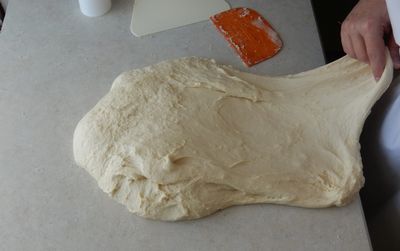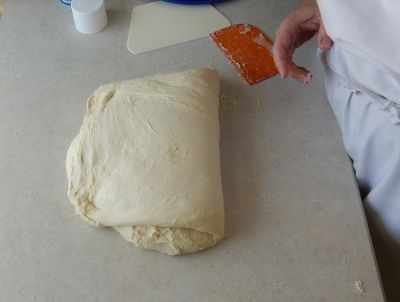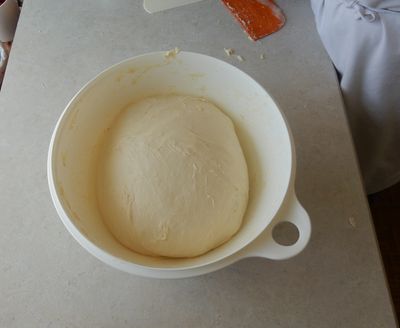The bulk fermentation stage is where you get to take a break and let your little helpers (yeast, enzymes, bacteria and gluten) take over. So while they take over for the next 45 minutes, pour yourself a drink, find a comfortable chair and let's ponder these little fellers.
What's Happening During Bulk Fermentation? #
We call this stage Bulk Fermentation because the dough is fermenting in one large ball. At the bakery it may be a tub with 20kg of dough in it. At home, maybe only four loaves. The large bowl of dough keeps warm easier and that warm environment helps the little fellers thrive so your bread gains flavour, volume and strength.
- Enzymes in the dough are working hard to break down starch molecules into sugars for both you to eat (flavour) and for the yeast to eat too.
- When the yeast cells aren't dividing to make more yeast, they're feeding on the sugar and belching out carbon dioxide.
- The carbon dioxide is trapped in the dough by the gluten protein, which during bulk fermentation continues to lengthen and strengthen into a web of protein.
I think of the gluten web like a balloon. When the gluten is fully developed, it can expand and trap gas just like a balloon, so your bread can rise and your loaf is light and airy, not a dense, heavy brick.
- Finally, yummy lactic acid bacteria goes to work on the starch too, creating a rainbow of flavour profiles. Lactic acid bacteria is one of the main flavour catalysts in sourdough bread (I'll cover that in a future course) but is present is smaller amounts in our Learning Loaf too.
Fold the Dough After 45 Minutes #
Back to gluten for a second. I mentioned that the gluten continues to develop during bulk fermentation, but we're going to help it along a little by giving the dough a single stretch and fold after 45 minutes.
The stretch and fold will accomplish two things:
- Strengthen the gluten. It's relaxed a lot during bulk fermentation. The fold will help it line up properly.
- Realign the temperature. By now the outside of the dough is a little cooler than the cozy insides. The fold will help move the cool bits into the middle.
Here's how you do it.
Pour the Dough Back on the Counter #
Don't be scared if the dough ball spreads out a lot more than when you finished mixing. That's normal.
Stretch Out The Bottom Edge and Fold It Over the Middle #

See how much the dough can stretch now? The gluten is very extensible. It won't break. The fold will help it become elastic too. A balance between extensibility and elasticity is what we want for our loaf.

Repeat for the Top, Left and Right Sides #

Left side has just been folded over the middle
Feel free to turn the dough so you are always pulling the dough toward you and folding it away from you. Do whatever is comfortable.
Roll the Dough Over and Place Back in the Bowl #

The dough ball is much smoother and stronger than ever, which is what we want.
Compare the dough in the bowl to the dough you started this step with. Is it stronger? Does the dough form more of a ball than a blob? It should!
The dough should get smoother and smoother as we go, too. From here on in, I try to be neat with my dough. I'll try as best as I can not to tear it up as I go.
Baker Tip: As you practice with this loaf, you may find the dough isn't quite strong enough when it comes time to bake. Folding the dough twice during bulk fermentation (after 30 minutes and again after 1 hour) may help strengthen things up. Adding and removing folds is an adjustment we use at the bakery when things start acting strange.
Cover the Bowl and Set in a Warm Place for 45 Minutes #
This second 45 minute stage makes for a 1 hour 30 minute bulk fermentation in total. Lovely. Next time, we shape!